ASIAN STUDIES 530 - FALL 2007
  | 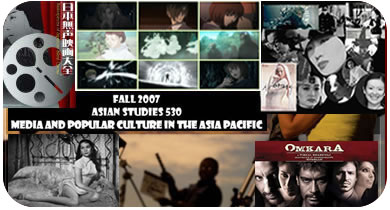 |
Class
Schedule and Location : LS 132 T 4:00 p.m. to 6:40 p.m.
Office Hours: AL 467
Copyright
© 2007 Miguel B. Llora. All Rights Reserved.
Lecturer: Miguel Llora,
MA
![]() Asian
Movie Timeline Project Notes
Asian
Movie Timeline Project Notes
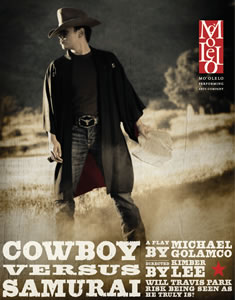 |
ASIAN STUDIES 530 - FALL 2007
  |  |
Class
Schedule and Location : LS 132 T 4:00 p.m. to 6:40 p.m.
Office Hours: AL 467
Copyright
© 2007 Miguel B. Llora. All Rights Reserved.
Lecturer: Miguel Llora,
MA
![]() Asian
Movie Timeline Project Notes
Asian
Movie Timeline Project Notes
 |
| General Notes |
Some
documents on this site are provided in Microsoft Word format. You will need Microsoft
Word or an equivalent to view and print these documents. Documents which are in
Microsoft Word format will be annotated with this graphic: Other documents on this site are provided in Microsoft PowerPoint format. You will need Microsoft PowerPoint or an equivalent to view and print these documents. These documents will be annotated with this graphic: Some documents on this site are provided in Adobe Acrobat format. You may need Adobe Acrobat Reader to view, fill out and print these documents. This software is available for free at Adobe's Web Site. Documents which are in Adobe Acrobat format will be annotated either with "PDF" or with this graphic:  |
ASIAN 530 - Media and
Popular Culture in the Asia Pacific
Fall 2007
ASIAN
530 | 1 | Media
and Popular Culture in the Asia Pacific | 1600
- 1840 | T | LS
132 |
Course
Description |
AS530 – Course Reserve Series
| Series # | Title | Country |
| 1 | Representation and the Media | USA |
| 2 | Big Shot’s Funeral | China |
| 3 | Rashomon | Japan |
| 4 | Farewell My Concubine | China |
| 5 | The World of Suzie Wong | USA |
| 6 | Ghost in the Shell | Japan |
| 7 | In The Mood For Love | Hong Kong |
| 8 | Casshern | Japan |
| 9 | JSA | Korea |
| 10 | Gojira | Japan |
| 11 | Godzilla: King of the Monsters | Japan |
| 12 | Battle Royale | Japan |
| 13 | Flags Of Our Fathers | USA |
| 14 | Letter From Iwo Jima | USA |
| 15 | Water | India/Canada |
| 16 | Grave of the Fireflies | Japan |
| 17 | Princess Mononoke | Japan |
|
![]()
![]() Aug. 28, 2007: Introduction and Orientation: What is Pop Culture? Stuart Hall
on Discourse and Media
Aug. 28, 2007: Introduction and Orientation: What is Pop Culture? Stuart Hall
on Discourse and Media![]() Sept. 4, 2007: Pop Culture as Mass Culture: Feng Xiaogang's "Critique"
Sept. 4, 2007: Pop Culture as Mass Culture: Feng Xiaogang's "Critique"![]() Sept. 11, 2007: Pop Culture and Global Identities: Akira Kurosawa's "World"
Sept. 11, 2007: Pop Culture and Global Identities: Akira Kurosawa's "World"![]() Sept. 18, 2007: Culture, Citizenship, and Governance: Zhang Yimou and Chen Kaige
Sept. 18, 2007: Culture, Citizenship, and Governance: Zhang Yimou and Chen Kaige![]() Sept. 25, 2007: Asia, Asians, and Asian Americans
in Cinematic Imaginings
Sept. 25, 2007: Asia, Asians, and Asian Americans
in Cinematic Imaginings![]() Oct. 2, 2007: Technobodies, Robots, Heroes, and Heroines: Full Feature Films
Oct. 2, 2007: Technobodies, Robots, Heroes, and Heroines: Full Feature Films![]() Oct. 9, 2007: Pop Culture, Race, Ethnicity, and Gender: Wong Kar-Wai
Oct. 9, 2007: Pop Culture, Race, Ethnicity, and Gender: Wong Kar-Wai![]() Oct. 16, 2007: Animation in the Transcultural Asia Pacific: Ongoing Sagas
Oct. 16, 2007: Animation in the Transcultural Asia Pacific: Ongoing Sagas![]() Oct. 23, 2007: Pop Culture, Race, Ethnicity, and Gender II: Park Chan-Wook
Oct. 23, 2007: Pop Culture, Race, Ethnicity, and Gender II: Park Chan-Wook![]() Oct. 30, 2007: Pop Culture, Nature, and Nationalism: Gojira and the Bomb
Oct. 30, 2007: Pop Culture, Nature, and Nationalism: Gojira and the Bomb![]() Nov. 6, 2007: Falling in Love: The World of Soap Operas and "Sassy"
Girls
Nov. 6, 2007: Falling in Love: The World of Soap Operas and "Sassy"
Girls![]() Nov. 13, 2007: A Critical Look at Asian Extreme
Nov. 13, 2007: A Critical Look at Asian Extreme![]() Nov. 20, 2007: Media and War: Heroes, Perspectives, and our Love Affair with the
Underdog
Nov. 20, 2007: Media and War: Heroes, Perspectives, and our Love Affair with the
Underdog![]() Nov. 27, 2007: Media and Pop Culture: Global, Regional, National, and Local Spaces
(SE Asia)
Nov. 27, 2007: Media and Pop Culture: Global, Regional, National, and Local Spaces
(SE Asia)![]() Dec. 4, 2007: Media and Pop Culture: Global, Regional, National, and Local Spaces
II (India)
Dec. 4, 2007: Media and Pop Culture: Global, Regional, National, and Local Spaces
II (India)![]()
CLASS
SCHEDULE & LECTURE OUTLINES
Week
1 - Aug. 28, 2007: Introduction and Orientation:
What is Pop Culture? Stuart Hall on Discourse and Media
Readings: Movies:
|
Readings:
Movies:
A
little history:
In The Order of Things, Foucault discuses Velasquez’s Las Meninas. The painting has been subject to considerable debate, and as Foucault uses it, raises broader questions about the nature of representation and of the subject. The most widely held interpretation of this painting (below) is that Velasquez is working on a portrait of the King and Queen, who are reflected in the mirror on the back wall of the scene. The other people in the painting, including the artist and the young princess in the center, are looking at the royal couple as they sit for their portrait. Yet the painting is unusual in that “we are looking at a painting in which in turn the painter is looking out at us.” (Foucault, 1970). Further, the young princess and her entourage are the center of the painting yet cannot truly be labeled the ‘subject’ of the painting. Perhaps more interestingly, Las Meninas focuses on figures at whom everyone is looking, yet we cannot see. This is both because their portrait on the canvas is obscured from our gaze and because they are in fact seated in the position from which we are looking! In his comments on this painting, Foucault makes some broader arguments about the nature of representation. Notably he argues that while the painting shows us a scene in which a portrait is being painted, it is also a painting that tells us something about how representation and the subject work. In this way it produces its own kind of knowledge. It is crucial to Foucault that the painting does not have any completed meaning. In this line of reasoning, Las Meninas has two subjects and two centers: one constantly alternates between the young princess in the scene and the king and queen reflected in the mirror, never finally settling on one. Foucault is also interested in how this process exemplifies two different kinds of ‘looking’ or ‘reading.’ On the one hand, the spectator is looking from the position in front of (outside) the painting, focusing on the princess. At the same time, the spectator is identifying with the gazes inside the painting, looking out of the scene. By projecting ourselves into the subjects of the painting helps us as spectators to ‘see’ or to make sense of it. Thus we take up positions indicated by the discourse, identify with them, subject ourselves to its meaning, and become its ‘subjects.’ (Hall, 1997). Source: <http://www.smith.edu/kahninstitute/hadden/reading.html> Consider this when watching "Big Shot's Funeral. |
Readings:
Movies:
Tasogare
Seibei (2002) Also Known As: The Twilight Samurai (UK)
All
things are subject to interpretation; whichever interpretation prevails at a given
time is a function of power and not truth. Consider this when watching "Rashomon."
|
Readings:
Homage to China's Fifth Generation Directors
Movies:
Tian
Zhuangzhuang...
In Sheldon Hsiao-peng Lu's Chapter "National Cinema, Cultural Critique, Transnational Capital The Films of Zhang Yimou, the author writes: "The blending of intimate and the social, the lyricaland the epic, the familial and the historical in this film [To Live] is also evident in two other Fifth-Generation films produced in the same year, if the term "Fifth Generation" is still appropriate: Blue Kite (Lan fengzheng) by Tian Zhuangzhuang and Farewell My Concubine by Chen Kaige. All three films share a similar fate: they have been circulated and screened in the international market but are either banned or have had limited release in China due to the hostility of the government (120).
|
Readings:
|
Readings:
Movies:
Metoroporisu
(2001) Also Known As: Osamu Tezuka's Metropolis (Australia) (USA) (DVD title),
Metropolis (USA), Osamu Tezuka's Metoroporisu (Japan) (complete title), Robotic
Angel (International: English title)
|
Readings:
Movies:
Quizás,
Quizás, Quizás (Perhaps, Perhaps, Perhaps)
|
 | The
8th Annual San Diego Asian Film Festival will be October 11-18, 2007 Mark Your Calendars! |
Readings:
Shin
seiki Evangelion (1995) Also Known As: Neon Genesis Evangelion (USA) (video title),
New Century Evangelion (literal English title) Shin seiki evangerion (Japan) (alternative
transliteration)
No
matter what, the movie was difficult to follow. In the end, it did not matter
because the visuals where so stunning one just had to allow for subliminal influence
to take over. This review of Casshern will explore 4 independent yet interrelated
topics. The movie is difficult to follow because what seems like plot complexity
on the surface might just be a result of trying to do too much. What saves the
movie from its own complexity is its visual display - it is a pretty movie. But
"just" a pretty movie it is not. My take on the movie is that Azuma
(Akira Terao) - despite all the attention placed on Tetsuya (Yusuke Iseya) and
Brai (Toshiaki Karawa) is really about - at least on one level - about a new Dr.
Frankenstein. One of those levels that Kiriya succeeds is making us forget that Azuma is really the the new Dr. Frankenstein. Set in a war-torn futuristic earth, Casshern brings to the screen the stock sci-fi dangers replete with a images of a dystopic, post-apocalyptic backdrop. A short synopsis can be forgiven me here. After 50 years of war between the "Great Eastern Federation" and "Eurasia" Earth is awash with all sorts of genetic consequences. We get visions of mice with eyes in odd places. Let us not forget the wonders of Imamura Shohei's 1989 classic Kuroi ame (Black Rain) and the dangers of war - not just any war - nuclear war. So, it is fitting that mankind suffer the consequences of his own folly in the cornucopia of artificially-produced postwar sicknesses and genetic deformities. This obviously foreshadows that man is not in conjunction with nature. This brings me back to Miyazaki Hayao's 1997 classic Mononoke Hime (Princess Mononoke) calling to question the duality of either/or but placing man squarely at the center of both man and nature. The remedy, as both Kiriya and Miyazaki warn us is not more technology, particularly the notion of the "neo cell" project. Enter Professor Azuma, the neo-Dr. Frankenstein. As much as we cannot blame the Frankenstein monster we cannot blame the "Neo Sapiens" and Testuya for all the rage. Mind you, the source of all the rage is in the movie and I won't give that away - that you as a viewer need to figure out for yourselves. However, like the Frankenstein monster, the creature fights its creator. Ironically, one of the main issues of the movie is that fact that Tetsuya gets to live again. Our reluctant hero, cum nationalistic warrior is brought back from the dead and in effect we are not really sure what he is fighting for - which brings us back to plot complexity. I say never mind… focus on the metal suit and battle armor and his recently provided for superhuman abilities - which we are not really sure, how he gets… Tetsuya is now Casshern! And that is all that will matter for 2.5 hours. On many levels, Casshern is just a movie - or is it? It would be good though to leave you with these final musings, the movie does depend on emotions and the kind of reactions from its cast so be ready for it and forgive the director this one excess - one of many. The message is unambiguous war is hell and coupled with technological advances without soul - that hell is made even worse. On that level alone I think the movie is worth watching. That we are presented with this lesson though the creative use of CGI and a not really complicated script is a real treat - but that is my opinion. For the length of the film - and it is 2.5 hours in the original cut - so the new DVD at 2 hours is no "Director's Cut - but edited down. No matter what, as far as I am concerned, Casshern has something for everyone on several levels - particularly the superficial ones - but those with a more sublime and deeper appreciation - don't fret - you won't be let down. Miguel Llora
|
Readings:
|
 | Paper 1 - Due October 23, 2007 |
Readings:
In the original Japanese version, there were several references not only to the atomic-bombing of Hiroshima and Nagasaki but also to the firebombing of Tokyo. These were deleted in the American version of the film. However, it is claimed that English language Godzilla, King of the Monsters! placed Gojira and Toho in the world stage. Prior to 1956 and the showing of Rashomon in 1950 there was little interest - at least iin the international arena for both Jidai-geki and Kaiju-ega leading to the opening up of Japanese movies to the rest of the worldworld. What does this say about re-makes? The Host and D-War...
|
Readings:
|
Readings:
|
Readings:
|
Week
14 - Nov. 27, 2007: Media and Pop Culture: Global,
Regional, National, and Local Spaces (SE Asia)
Readings: |
Slight Modification in the Schedule: Posted on Blackboard 10/04/2007
Seeing Yellow - Asian Men in the Cinematic Imagination
Hold the presses everyone!
Due to popular demand, we will be doing Asian Men in the Cinematic Imagination... in line with preparing you for your paper #1:
Paper
1
Students are required to submit a 4 [content] - 6 [with references] page
[maximum] critical essay based upon at least one of the films presented at the
San Diego Asian Film Festival [SDAFF]. Your essay should be based upon questions
related to the representation of Asia, Asians, or Asian Americans in the film
or films viewed. The SDAFF provides students with a unique opportunity to meet
with and question many of the directors and actors in the films associated with
the festival. The midterm paper accounts for 15% of the final grade.
You will find readings on the "Yellow Peril" for the reaction paper - so we making a slight modification in terms of the schedule and the content of 1 week. Week 14 - which was going to be our "free to select a topic" week will be converted from its original SE Asian examination to "Seeing Yellow - Asian Men in the Cinematic Imaginationn." All the readings and a duplicate of the powerpoint can be found in the folder for Week 14 - so kindly check there for the change. It is still Thursday 10/04 so that should give you time to adjust. I would like reaction to the issue of the Yellow Peril please. Thanks.
On Tuesday 10/09 we will continue with out topics, only one week behind, until week 15 where we will once again be on point. So it is really a slight modification of the schedule and not the content. We will, on Tuesday, start with a full show of "The Cheat" for the first hour and will watch "Slanted Screen" for the second hour. We will, after a short break, proceed with our group discussions dealing with the prompt for your reaction paper:
PROMPT: Racial Stereotyping, Media Racism, and Identity converge and are reflected into and out of the mainstream imagination as we have seen in movies like "The World of Suzie Wong." How are depictions of Asian Men in the Cinematic Imagination different between men vis-a-vis women and how does threat of the Yellow Peril come into play in this analysis?
M
http://www.imdb.com/title/tt0005078/
http://www.slantedscreen.com/
http://www.imdb.com/title/tt0262772/
Spotlight
- Vietnam
Movies I highly recommend aand wish we had time to explore and talk
about...
 |  |  |
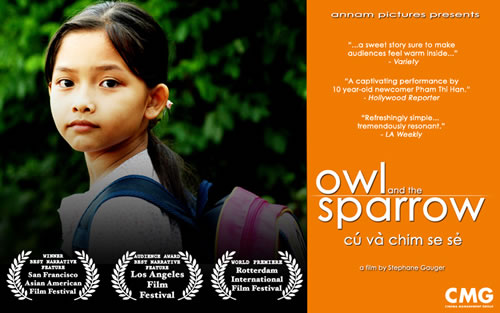 |
Week
15 - Dec. 4, 2007: Media and Pop Culture:
Global, Regional, National, and Local Spaces II (India)
Readings:
Highly Recommended:
|
| Final Paper Due - December 4, 2007 |
Finals Week - December 8 - 15
Possible Thursday Night Viewings
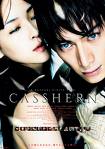 |  |  |
Books: Ciecko,
Anne Tereska. Ed. Contemporary Asian Cinema: Popular Culture in a Global Frame.
New York: Berg, 2006. | Periodicals: Anisfield,
Nancy. "Godzilla/Gojiro: Evolution of the Nuclear Metaphor."
Journal of Popular Culture. 29.3 (Winter 1995): 53-62. [Gojira] |
More Resources
Books:
Baker,
Rick and Toby Russell. The Best of Eastern Heroes. London: Eastern Heroes
Publications, 1995.
Buruma, Ian. Behind the Mask. New York: Pantheon
Books, 1984.
Cowie, Peter. ed. Variety International Film Guide. Hollywood,
CA: Samuel French 1996.
Desser, David. Eros Plus Massacre. Bloomington,
IN: Indiana University Press, 1988.
Hammond, Stefan and Mike Wilkins. Sex
and Zen and A Bullet in the Head. New York: Fireside, 1996.
Lent, John.
The Asian Film Industry. Austin, TX: University of Texas Press, 1990.
Logan,
Bey. Hong Kong Action Cinema. Woodstock, NY: Overlook Press, 1996.
Mullen,
Joan. Waves at Genji's Door. New York: Pantheo, 1976.
Ramachandran,
T.M. 70 Years of Indian Cinema. Bombay, India: Cinema India-International,
1985.
Rayns, Tony. Seoul Stirring. London: ICA, 1994.
Richie, Donald.
The Japanese Movie, rev. ed. New York: Kodansha International, 1982.
Silver,
Alain. The Samurai Film. Woodstock, NY: Daikaiju, 1996.
Tucker, Guy
Mariner. Age of the Gods. Brooklyn, NY: Daikaiju, 1996.
Weisser, Thomas
and Yuko Mihara Weisser. Japanese Cinema. Miami, FL: Vital Books, 1996.
Yang,
Jeff et al., Eastern Standard Time. New York: Houghton Mifflin, 1997.
Journals
and Periodicals:
Filmfare, Stardust, Asiaweek, Cinemaya, Tokion, Giant Robot,
Filipinas, Film Comment, Cineaste, Cinema India-International, Variety, Animerica,
Asian Eye, She, Asian Trash Cinema, Asian Cult Cinema, Oriental Cinema, Kinema
Jumpo, Hong Kong Film Connection.
Websites:
| A.D.V.
Films Criterion Collection/Janus Films Regal Home Entertainment Tai Seng Video Marketing The Right Stuf International Inc. crunchyroll.com YouTube.com Google Video Yahoo Video YesAsia.com | Chinese
Cinema HanCinema.com CineKorea.com KoreanFilm.org MidnightEye.com imdb.com [Japan Search] imdb.com [Korea Search] imdb.com [China Search] imdb.com [Hong Kong] imdb.com [Taiwan] imdb.com |
San
Diego Asian Film Festival Addendum...
Friday October 12 Meet Director Justin
Lin @ SDSU...
Come meet in person film director Justin Lin (FF3: Tokyo Drift,
Annapolis, Better Luck Tomorrow) and actors Sung Kang (FF3:Tokyo Drift) and Roger
Fan (Annapolis, Better Luck Tomorrow).
They're coming to SDSU to talk about
their latest feature together called FINISHING THE GAME, a mockumentary based
on the real life death of Bruce Lee.
Bruce Lee's shocking death left legions
of stunned fans and a legacy of 12 minutes from his unfinished Game Of Death.
Undeterred, studio executives launched a search for his replacement chronicled
here through the eyes of five aspiring thespians who find out what the real game
is.
Plan on a block of time between 12:00 and 3:00 p.m. Exact time and place
to follow.
AS310
Finishing
the Game: |
| The
Cats of Mirikitani: Documentary about red-bereted Jimmy Mirikitani, a feisty painter working and living on the street, near the World Trade Center, when 9/11 devastates the neighborhood. A nearby film editor, Linda Hattendorf, persuades elderly Jimmy to move in with her, while seeking a permanent home for him. The young woman delves into the California-born, Japan-raised artist's unique life which developed his resilient personality, and fuel his 2 main subjects, cats and internment camps. The editor films Jimmy's remarkable journey. [Approved for AS310] |
Tie
a Yellow Ribbon: The feature-length narrative film TIE A YELLOW RIBBON gives a rare view into the emotionally complex interior of young Asian American women, featuring a Korean adoptee who needs to come to terms with her damaged past. Joy Dietrich won the Director Prize at CineVegas Film Festival for TIE A YELLOW RIBBON, her first feature film. [Approved for AS310] | 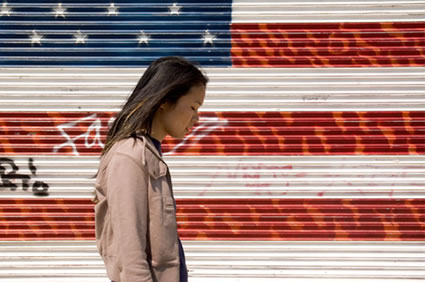 |
 | Baby:
A tragic tale of an Asian youth's gang life in South East Los Angeles, set during the mid 80's to the early 90s. [Approved for AS310] |
West
32nd: "West 32nd" takes the cameras inside New York's gritty Korean underworld. After hustling his way onto a homicide case, attorney John Kim (Cho) finds himself thrust into a sordid world of hard realities and moral compromises after he is taken under the wing of a ruthless Korean gangster who knows no limits. [Approved for AS310] |
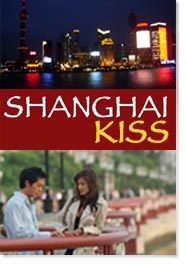 | Shanghai
Kiss: A struggling Chinese-American actor, who unwittingly finds himself involved with a high school girl, learns he has inherited his grandmother's home in Shanghai. The American-raised character moves to China in an attempt to connect with his ancestry, leaving behind quite possibly the only girl who has ever loved him. [Approved for AS310/AS101] |
Year
of the Fish: A rotoscope-animated modern-day Cinderella story set in the underbelly of New York's Chinatown. [Approved for AS310] |  |
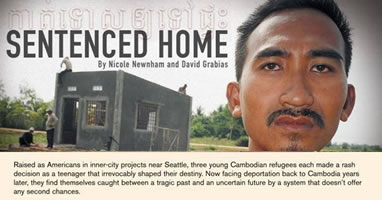 |
|
AS101
Owl
and the Sparrow: |
The
Great Happines Space: Tale of an Osaka Love Thief: Welcome to The Great Happiness Space: Rakkyo Café. The club's owner, Issei (22), has a staff of twenty boys all under his training to become the top escorts of Osaka's underground love scene. During their training, they learn how to dress, how to talk, how to walk, and most importantly, how to fake relationships with the girls who become their source of income. Join us as Osaka's number one host boy takes us on a journey through the complex and heartrenching world of love for sale in the Japanese underground. [Approved for AS101] |
| 5
Centimeters Per Second Realistic anime about the distance between people, time, and love. [Approved for AS101] |
| Shanghai
Kiss: A struggling Chinese-American actor, who unwittingly finds himself involved with a high school girl, learns he has inherited his grandmother's home in Shanghai. The American-raised character moves to China in an attempt to connect with his ancestry, leaving behind quite possibly the only girl who has ever loved him. [Approved for AS101/AS310] |  |
A collection of short films about the universal search for truth and justice. From the dramatic story of a young couple who hired an illegal immigrant and the civil rights movement sparked by children of Japanese WWII internee to the cry for justice of an Iraqi rapper. [Approved for AS101/AS310] | A collection of compelling short films about family and the ties that bind us. From a hilarious potluck dinner with a quirky filipino family to a father re-connecting to a son who left home to pursue filmmaking to the emotional journey of an American to see his dying father in India, this program is powerful as it is diverse. [Approved for AS101/AS310] |
Nanking:
"Nanking" tells the story of the rape of Nanking, one of the most tragic events in history. In 1937, the invading Japanese army murdered over 200,000 and raped tens of thousands of Chinese. In the midst of the horror, a small group of Western expatriates banded together to save 250,000 -- an act of extraordinary heroism. Brinnging an event little-known outside of Asia to a global audience, "Nanking" shows the tremendous impact individuals can make on the course of history. It is a gripping account of light in the darkest of times. [Approved for AS101] | New
Year Baby: Born on Cambodian New Year in a Thai refugee camp, Socheata never knew how she got there. After her birth, the family left the past behind and became American. Her parents hid the story of surviving the Khmer Rouge genocide. In NEW YEAR BABY, she journeys to Cambodia and discovers the truth about her family. She uncovers their painful secrets kept in shame which also reveal great heroism. [Approved for AS101] |
I'm
a Cyborg, But That's OK: A girl who thinks she is a combat cyborg checks into a mental hospital, where she encounters other psychotics. Eventually, she falls for a man who thinks he can steal people's souls. [Approved for AS530 only] |
 | Dark
Matter: Based on actual events, a Chinese university student responds violently when his chances for a Nobel Prize are dashed by school politics. [Approved for AS530 only ] |
Please Come Join Us!
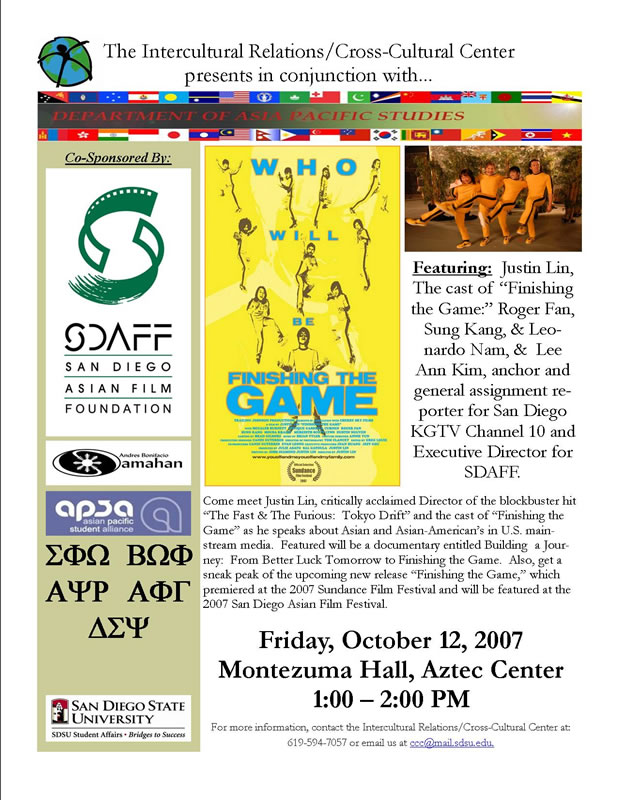
page last updated
05 January 2008
Copyright © 2007 Miguel B. Llora, MA. All Rights Reserved.
Best viewed on Internet Explorer 5.x or later at a minimum of 1024 x 768 resolution